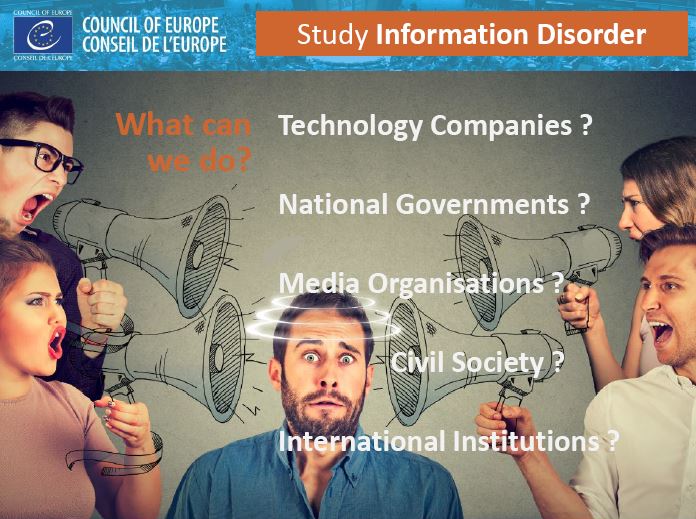Plan d’études romand (PER) • Des députées et députés romands ont interpellé leurs gouvernements respectifs pour savoir quel était l’enseignement effectivement dispensé aux élèves en matière de Médias, images et technologies de l’information et de la communication (MITIC). Le développement de l’esprit et de l’indépendance critique des élèves face aux contenus de l’Internet est au centre de leur interrogation. Mise en perspective de la réponse du gouvernement vaudois.
En mai 2010, le Plan d’études romand (PER) a été adopté par les Directeurs cantonaux de l’instruction publique des cantons romands. Ce nouveau programme scolaire commun aux six cantons a été introduit progressivement à partir de 2011 et sa généralisation s’est officiellement achevée l’année scolaire 2013-2014. L’éducation aux MITIC (Médias, images et technologies de l’information et de la communication) est un des domaines de formation générale du PER. Le plan prévoit que l’enseignement aux MITIC soit dispensé en situation, dans toutes les classes et toutes les disciplines, tout au long de la scolarité obligatoire.
Des députées et députés romands, membres du Forum Interparlementaire Romand (FIR), se sont inquiété-e-s de savoir quel était l’enseignement d’éducation aux médias effectivement dispensé aux élèves. C’est en effet lors d’un séminaire organisé par le FIR en mai 2017 dans les locaux de la Radio Télévision Suisse (RTS) sur le thème Incidences des nouvelles technologies de l’information et de la communication sur la formation de l’opinion, notamment dans les campagnes électorales et les votations, que les député-e-s ont pris conscience de l’importance de la maîtrise de l’usage des médias sociaux ainsi que du rôle fondamental de l’école dans la formation de l’esprit critique des élèves face aux contenus disponibles librement sur l’Internet. Les député-e-s ont décidé d’interpeller les gouvernements des six cantons de Suisse occidentale en formulant une même demande à leur adresse.
Le Conseil d’Etat du canton de Vaud vient de faire connaître sa réponse.
Le gouvernement vaudois souligne en préambule qu’il partage le souci des auteur-e-s de l’interpellation et déclare que «donner aux élèves les outils appropriés permettant de favoriser le développement de l’esprit et de l’indépendance critique, face aux médias et aux avancées technologiques, constitue un enjeu majeur dans notre société numérique», en précisant que «l’éducation aux médias, ainsi que les productions de réalisations médiatiques, font partie du projet global de formation de l’élève». Le Conseil d’Etat entend atteindre cet objectif par différentes mesures: renforcer la formation du corps enseignant (formation initiale et continue), former des personnes ressources à même de conseiller et d’épauler le personnel enseignant, soutenir la mutualisation des ressources d’enseignement et d’apprentissage ainsi que l’innovation pédagogique, favoriser le développement de projets interdisciplinaires, développer la recherche et, bien sûr, former les élèves en créant un environnement d’apprentissage propice s’appuyant sur les technologies numériques et les réseaux. Dans la perspective de la transition numérique, le gouvernement vaudois souhaite aussi élargir le champ prévu par le Plan d’études romand à la culture informatique.
Un ensemble de moyens est donc prévu pour atteindre les objectifs MITIC du Plan d’études romand. Cependant, le Conseil d’Etat vaudois ne donne pas de chiffres sur ce qui a été accompli et ce qui reste à accomplir près de cinq ans après la généralisation du Plan d’études romand. Par ailleurs, une large partie de l’exposé du Conseil d’Etat porte en fait sur la «transition numérique» de l’école vaudoise. L’enseignement avec des moyens numériques et l’enseignement d’une «culture générale de la numérisation» y tiennent la vedette, alors que le développement spécifique des compétences MITIC des élèves précisées dans le Plan d’études, en particulier les connaissances et compétences relatives aux médias et aux images (le «MI» de MITIC), si fondamentales aujourd’hui, y occupe la portion congrue.
Notons que l’usage même du terme MITIC est problématique. Cet acronyme-valise se rapporte en effet à tout ce qui concerne l’enseignement et l’apprentissage en lien avec les médias et les technologies numériques: un objet d’étude (discipline), des vecteurs d’information (médias, réseaux sociaux), des outils (appareils, applications informatiques), des contenus (texte, image, film, contenu interactif), des moyens d’enseignement (tableau blanc interactif, ressources pédagogiques), des approches pédagogiques (éducation aux médias, didactique). De là une confusion qui est souvent inextricable.
(Lire à ce propos mon article: «MITIC: Pour une pédagogie de l’image dans les classes de Suisse romande», août 2015.)
Le souci principal de l’interpellation des député-e-s était de savoir si les compétences MITIC étaient réellement acquises par les élèves
Le souci principal de l’interpellation des député-e-s était de savoir si les compétences MITIC étaient «réellement adoptées par les élèves». La réponse du gouvernement vaudois ne permet pas de le savoir. On peut raisonnablement penser que ce n’est pas le cas, ou de manière très limitée. Rappelons que cet enseignement doit être dispensé dans toutes les classes des trois cycles de l’école obligatoire et permettre aux enfants d’approfondir progressivement leurs connaissances et habiletés en la matière, ainsi que leur attitude vis-à-vis des médias et de leur contenu. Pour que cela soit possible, il faudrait que chaque enseignant-e ait la capacité de dispenser cet enseignement. Pour ce faire, un recyclage de tout le corps enseignant serait nécessaire. Cela n’est pas, pour l’heure, à l’ordre du jour. Le Conseil d’Etat n’en parle pas. Par ailleurs, sans données chiffrées sur les acquis des élèves (évaluation sommative), il est difficile, voire impossible, de savoir quelle est l’efficacité d’un dispositif de formation.
Certes, la formation initiale des futur-e-s enseignant-e-s de la Haute école pédagogique du canton de Vaud (HEP) comprend un volet MITIC, mais le renouvellement du corps enseignant est très lent. La participation volontaire à des cours, séminaires ou ateliers ponctuels, ou encore la mise à disposition d’une base de données d’exemples de bonnes pratiques, ne sauraient être suffisantes. A cet égard, la politique du canton de Vaud est semblable à celle des autres cantons romands qui prévoient que la formation du corps enseignant aux MITIC est réalisée dans la formation initiale, puis complétée par une offre de formation continue. Il faut savoir que la mise en oeuvre d’une pédagogie des MITIC en classe ne va pas de soi, les référentiels de compétences MITIC élaborés par l’UER Média et TIC dans l’enseignement et la formation (HEP Vaud) et le Service écoles-médias du canton de Genève permettent de s’en rendre compte. L’acquisition de ces connaissances disciplinaires et pédagogiques implique un parcours de formation théorique et pratique structuré.
On semble penser dans les départements de l’instruction publique que le remplacement progressif des enseignant-e-s partant à la retraite par des jeunes qui auront reçu une formation MITIC dans leur cursus initial résoudra le problème. On peut sérieusement en douter, car c’est un processus très lent, qui ne garantit pas sur une longue période une relative homogénéité des savoirs et des pratiques pédagogiques. Les innovations technologies, les transformations du champ médiatique et des usages, ainsi que les nouveaux moyens et méthodes didactiques changent et imposent une mise à jour continuelle de ces savoirs et pratiques. Pour exemple, rappelons-nous qu’il y a une dizaine d’années seulement que sont apparus les réseaux sociaux et le smartphone qui ont tout bouleversé…
Pour disposer d’éléments d’appréciation sur la place de l’éducation aux médias et aux images (MI) dans les classes du canton de Vaud aujourd’hui, examinons l’offre de formation continue proposée au corps enseignant par la HEP Vaud. La haute école a offert 52 cours l’année scolaire 2017-2018 portant sur des contenus MITIC. Parmi ceux-ci, 11 concernent l’éducation aux médias et/ou aux images (hors cours techniques). Si tous ces cours ont été effectivement ouverts, on peut évaluer à 200 le nombre d’enseignant-e-s qui ont pu y prendre part. Sachant que le corps enseignant de l’école obligatoire publique du canton de Vaud compte environ 8’000 membres (Office fédéral de la statistique), cela représente 2,5%. C’est très peu. Surtout que chacun de ces cours ponctuels, qui ne durent que quelques heures, ne couvre qu’une infime partie des connaissances et compétences nécessaires pour assurer une pédagogie des médias et des images (MI) de qualité. Le catalogue de cours de formation continue de la HEP Vaud ne constitue pas toute l’offre disponible cependant. D’autres modalités de formation peuvent être proposées, notamment dans les établissements. A cet égard, le Radiobus (HEP Vaud) permet la mise sur pied de projets interdisciplinaires de production de programmes radiophoniques à l’échelle d’une école. Une centaine de classes, et autant d’enseignant-e-s, y participent chaque année. Trois des cours de formation continue mentionnés permettent d’acquérir les savoir faire de base pour développer de tels projets. Un accompagnement pédagogique et technique étant assuré sur le terrain.
(Lire mon article «RadioBus, les écoles font de la radio», mai 2016).
Sans indication chiffrée sur le déploiement du volet MITIC du Plan d’études romand, la simple énumération d’actions ou de projets d’actions éducatives est incomplète, voire illusoire. A travers un exemple capté dans trois écoles du canton de Vaud, Frédéric Gonseth a bien montré dans son film Le Printemps du journalisme (2017) que les jeunes peuvent encore être aisément abusé-e-s par des manipulations d’images sur l’Internet.
(Lire mon article: «La nécessité de l’éducation aux médias démontrée par un film documentaire», février 2018).
Références
> Plan d’études romand (PER), Conférence intercantonale de l’instruction publique de la Suisse romande et du Tessin (CIIP).
> Réponse du Conseil d’Etat à l’interpellation Fabienne Freymond Cantone et consorts au nom d’une délégation du FIR (17_INT_032) – Nouveaux médias et révolution numérique: le Plan d’études romand, c’est bien, mais quelle assurance pour que son chapitre MITIC atteigne ses cibles?, canton de Vaud, 21 mars 2018.
> Référentiel de compétences MITIC pour la formation des enseignants, UER Média et TIC dans l’enseignement et la formation, Haute école pédagogique du canton de Vaud (HEP Vaud), octobre 2013.
> Référentiel de compétences MITIC à l’usage des enseignant-e-s, Service écoles-médias, Département de l’instruction publique, de la culture et du sport, Genève, octobre 2010.
> Offre de cours 2017-2018, Haute école pédagogique du canton de Vaud (HEP Vaud).
> RadioBus, Haute école pédagogique du canton de Vaud (HEP Vaud).
Cet article concerne le domaine Médias, images et technologies de l’information et de la communication (MITIC) – Education aux médias et à l’information (EMI) – Media and Information Literacy (MIL) | educationauxmedias.ch












